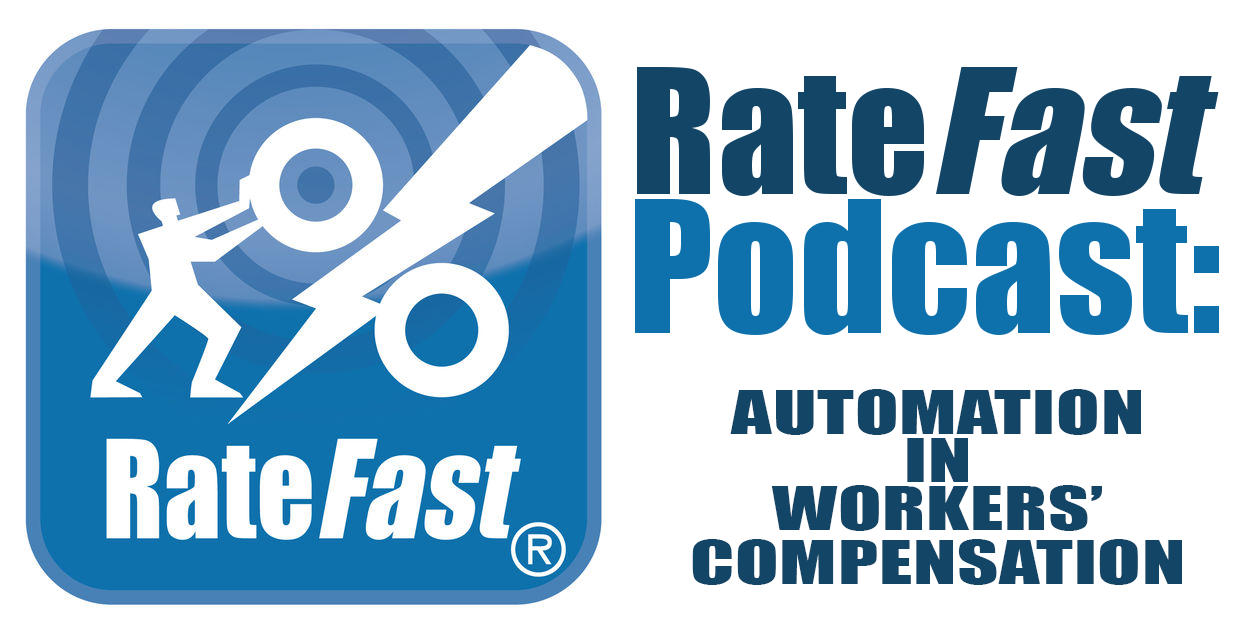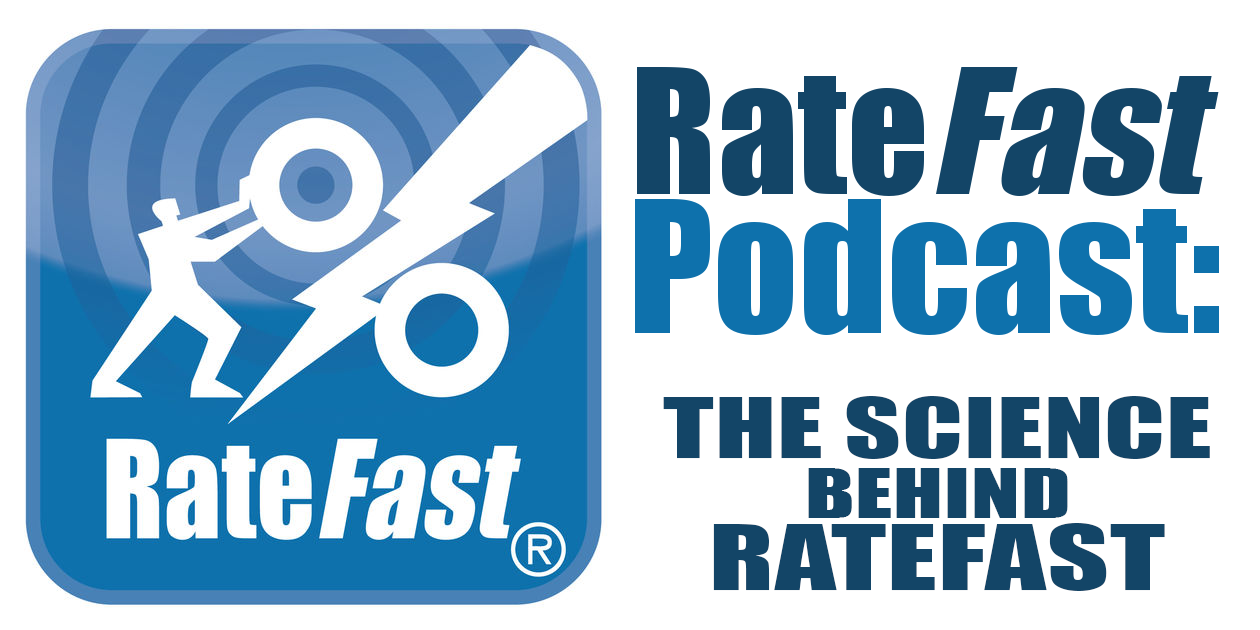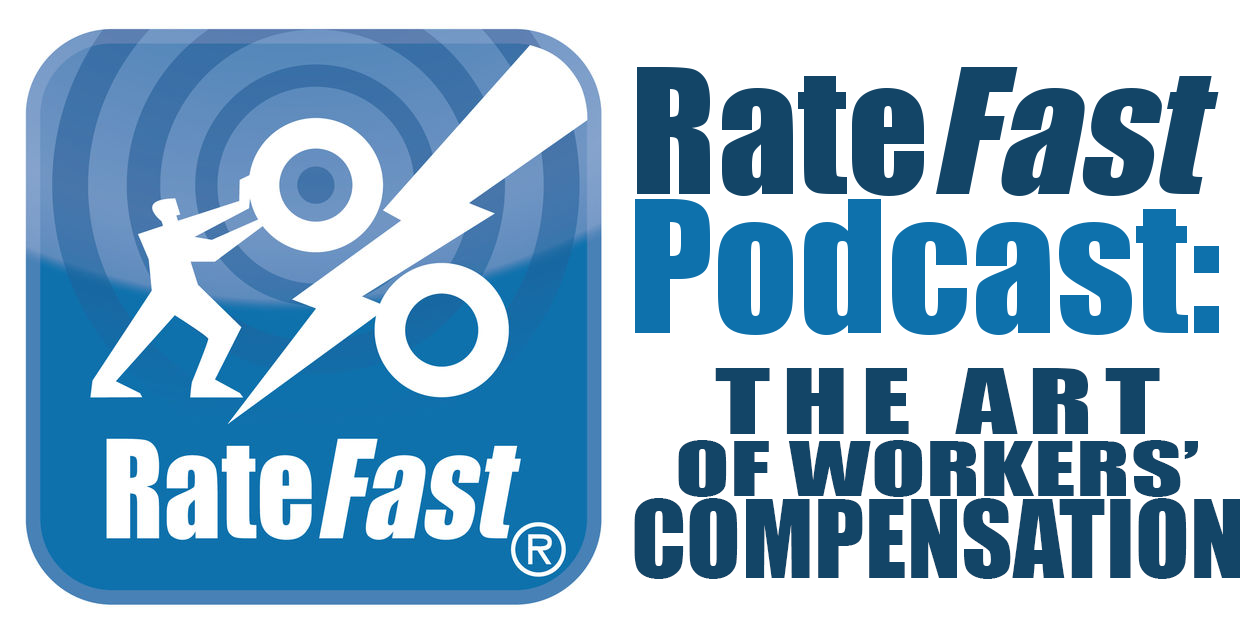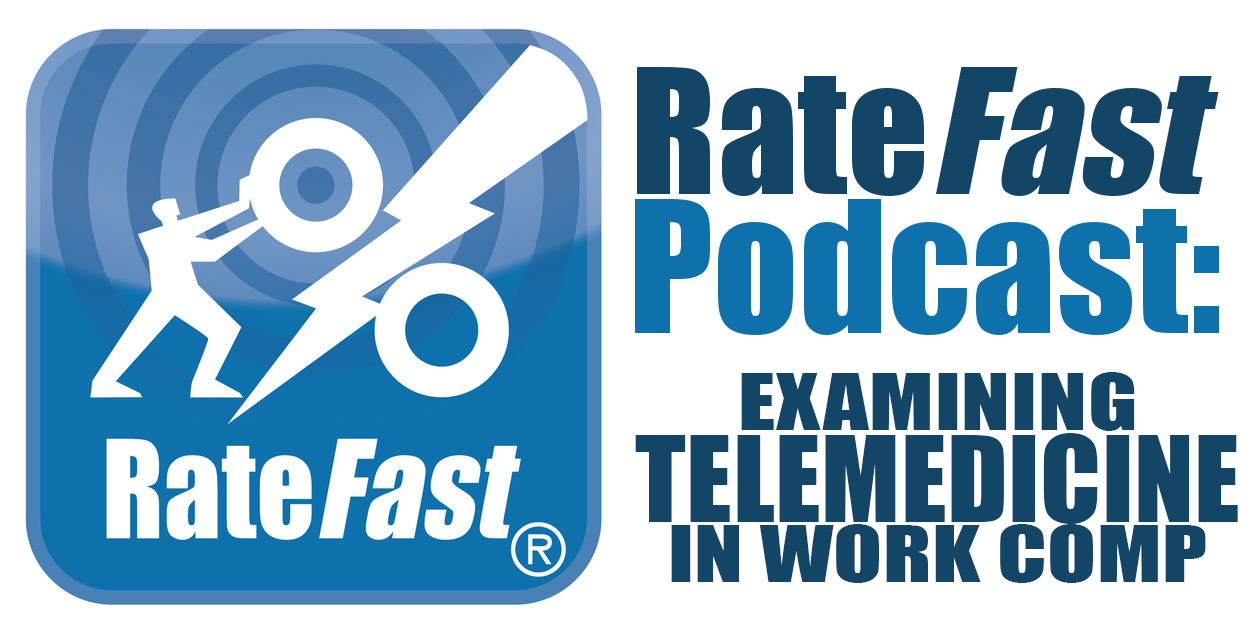If you’re a workers’ compensation provider, adjuster, or case manager check out RateFast Express: the service that writes your impairment reports for you!
Calculating the Integral of ADL Functions in Work Comp Reports
Cory Oleson (Host): Hello, and welcome back to the California Work Comp report. Today is Monday, June 14 2021. And today Dr. John Alchemy will be educating me about calculating the integrals of ADL functions in workers compensation reports.
And we are back. How are you doing tonight, John?
Dr. John Alchemy: You know, we’re back at it, Cory.
Cory: We definitely are. So today’s topic, we are talking about calculating the integral of ADL functions in impairment rating. And this is going to be one of those ones where, John, you’re going to be educating me quite a bit. I have a list of questions here. And, I am all ears for these things. So I guess we could start out with with calculating the integral of ADL functions and impairment ratings. What is it?
Dr. John Alchemy: Well, impairment ratings are driven as, as we’ve talked about before on the podcast, with regards to pain in ADL function and the pain chapter kind of drives the definition of ADL function. And that analog pain scale of 0 to 10. One of the common problems with impairment ratings is that a number often gets thrown down in the report for body part, for instance, low back pain, 7 out of 10. And they might say that it’s frequent. And then you go on to do the ADLs. You know, and the AMA Guides, table one, dash two and page four, you know, it’s got 34 ADLs. And so you go through that, you know, in good report, and you, you answer those, and you get a number some number out of 34, like, let’s say 7.
Cory: Which by the way, I jumped in without doing my job. ADLs, by the way, are activities of daily living, as defined by the AMA Guides, fifth edition, and those are the things that you do every day, which kind of if you were injured at work, you know, if those if your injury affects any of those things, and it affects your claim, and it affects ultimately your impairment rating. So that’s what ADLs are when we refer to them here. For the new for the brand new listeners, you just happened upon this word called podcast.
Dr. John Alchemy: Starting in the middle of your RateFast podcast binge, right here. Right, so ADLs. And remember, those are things at home not work. Everyone has the same activities at home, everyone has a different activity at work. So we go by the activities of daily living in the daily life. And in so you know, when you look at a number like that, in, we refer to that as a pain signature. And the pain signature is simply the 0 to 10, the frequency, the number of ADLs affected that are only painful, but don’t stop or alter the activity, and then the number of ADLs that are limited or do alter the activity of daily living, that’s what we refer to as pain signature. And so what happens is that you have to look at people’s activity and their pain in function throughout the day, of all the activities of daily living that they’re doing.
So the question comes up, that if my pain is 7 out of 10, and 7 ADLs limited, that means what is my pain across the other ADLs that are not included in the 7. And I know that those 7 are limited, because that’s consistent with a number of 7 out of 10, we define limiting pain as a 5 over 10 or higher. So we know that in that example, that I just gave, that the individual has limited ADLs. And therefore, you know, they have some ADLs that are limited, and sure enough, they have 7.
So the problem comes up often that the number tends to not be properly scaled across the individual’s full day. And that’s what the integral is about integrals. For those of you who have ever taken calculus, it’s all about calculating an area under a curve. And if you think about your day as activities, you know, that you can can’t do certain activities as a subset, you can really think of that day as a curve of when you can and can’t do things in a split line. And that’s what we’re talking about. We’re talking about further adjusting the accuracy of reports to better reflect an individual’s limitation on their activities of daily living. That’s what this whole feature and concept is about.
Cory: Okay, yeah. So you know, the injury that you’ve incurred, mixed with The myriad factors of how the body works, and also the things that you do in day to day life, you know, it can affect the amount of pain or the amount of, you know, kind of impairment or what have you, like physical not in the work comp, sense, but the, the amount of actual, like physical impairment that you have on your activity of daily living, which can vary throughout the day. And it’s it. And it sounds very important to know all these things. But why is it important to know these things, John?
Dr. John Alchemy: Well, you know, in the old system, when this is not done, ratings may be at risk for being overrated, meaning that the amplification of what’s written in there is being carried across all 34 ADLs for your pain, as opposed to just the ones that have been identified. So, you know, the calculations of the pain signature are used in various areas throughout the AMA Guides. And they’re used often, when there’s a range of ratings to be done, you have to bring in the ADLs. And you have to be able to calculate them as a scalar. Or something measurable, that has a measurable range in order to pick is this rating going to be 10? Or is it going to be 13% whole person impairment. And that’s done over and over and over and all the chapters of the AMA Guides. And if you don’t hit that number, right, your rating is going to be too high, or it’s going to be too low.
Cory: And then you’re going to you’re going to experience of what happens. And the reason that RateFast is a company to begin with is a you know, a disputed work comp claim, which slows down your whole process, and it makes it not really start over but it feels like you start over things. So I’m sure I’m sure it feels like it.
Dr. John Alchemy: Well, that’s really the whole mission of everything we’ve done and why RateFast was created was simply to get an accurate report and, you know, get these claims to a value that’s accurate and consistent, and that can be reproduced i I don’t want to go into all the details and the frustrations that that the people in this space deal with on trying to get an accurate report. But it I think just suffice to say that we’re working extremely hard to make it better and better. Every day, every report we do.
Cory: Yeah, absolutely. The binge listener will have plenty to hear about that. If they’re going through our archived episodes.
Dr. John Alchemy: Yes, they will. Yes, they will.
Cory: Great. Well, so, um, we know that, you know, calculating the integral of ADL functions is sort of calculating how any one activity of daily living is affected by the injury throughout the day. And we also know that it’s important because you know, not accurately calculating that and also not calculating the correct body part will result in sort of variations and fluctuations in the claim, which is going to set off, you know, alarms for the insurance adjuster who, you know, will may dispute your report, and then it will slow things down, and which is the tragedy of workers comp as we know it. So, the next question is, how does calculating the integral of ADL functions and impairment rating work?
Dr. John Alchemy: Yeah, that’s definitely a mouthful.
Cory: I think I just like saying it.
Dr. John Alchemy: It is it is fun to say I obviously. The way I best explain it, to people who are unfamiliar either with what an integral is, or what, what the calculation is set out to doing is that if you have, like, let’s say you have a cantaloupe, and you know, you got to cut the cantaloupe skin off the cantaloupe meat, right? So you can cut off the exterior of the cantaloupe. And let’s say eight cuts around, you know, the curve of the cantaloupe. Now, if you do that in eight cuts, and you look at your cantaloupe, your piece of cantaloupe is going to be kind of small. And if you look at a profile of the skin on the cantaloupe, you’re gonna see the edge of the skin, and then you’re gonna see a lot of cantaloupe attached to it. And that’s really the crude way that a lot of ratings are done right now, they kind of hack if you will, the exterior off or do a very blunt type of assessment. And the calculation is something what you’re left with something less than what it really should be, and I’m not saying the number should be higher or lower. I’m just saying the number should be different and more accurate.
Cory: I see what you’re saying. So yeah, cutting you’re cutting the skin. So what you’re gonna have at the end is – wait which one is cantaloupe? The green one is? Yeah, because honeydew is the orange one.
Dr. John Alchemy: No, no, I think you got that backwards. We got some we have an orange cantaloupe and a green honeydew.
Cory: Oh.
Dr. John Alchemy: That’s a different podcast.
Cory: Yeah! So when you say you’re skinning the entire cantaloupe, so you kind of have an octagon, an octagonal kind of shape. And then you have all of this, you know, cantaloupe that’s leftover and these big slices of skin that you took off. So you, you’re missing a lot of the meat of the fruit.
Dr. John Alchemy: Yeah, you’re throwing it out. Yeah. And it’s in, it’s just not being considered, right. So. So it’s kind of just like, it’s just like serving up an impairment report to one of the stakeholders, because at the end of the day, they’re going to get their little ramekin of fruit in front of them. Right. But that’s all they see. And they don’t know how much meat was left on that skin. Yes. Because that’s back in the kitchen. They’re not checking that out. Yeah. Yeah. So all they see is what’s in front of them. And I guess we could maybe make an analogy that they’re like, hey, this portion is too small, or this portion is too big, you know that, but they’re not quite sure. And that’s really what happens, you know, in reality, you know, one of the stakeholders is going to say, I don’t know how this calculation was done, but I think it’s wrong. You know, and, and that’s the problem we’re dealt with, because these things are, you know, not down to the highest science that they could be, shall we say, and RateFast is there to raise the bar, and make sure that everyone gets the report that they deserve.
Cory: Absolutely, and as much cantaloupe is they can get.
Dr. John Alchemy: That’s right. There’s a spectrum here, you know, and the integral, basically what we’re doing, if you think in your brain, okay, instead of taking eight cuts on this cantaloupe, I’m going to take 80 cuts. And instead of taking 80 cuts, I’m going to take 800 cuts, and instead of 800 cuts, I’m going to take 8000 cuts, and ultimately you push that towards infinity. And so your slices get smaller and smaller, which means the precision, and the fruit that’s left and the skin that’s removed, just becomes basically pushed to near zero, as far as the error rate and the and the reflection of the ADL loss, which is our cantaloupe in this in this discussion.
Cory: Yeah. And then, you know, as, as we’ve discussed before, the process of workers comp is laborious, and there are quite a few things for the work comp professional to do, which they simply don’t have time to do. So if you’re a work comp professional, and you’re trying to figure out the, you know, you’re trying to make as many cuts as you can with the time that you have allotted. But unfortunately, it doesn’t always work out that way. Because there’s the real life, things that that happen. Um, and, you know, as much as one would like to be able to make these infinite cuts, you know, you don’t have time to do it.
So sometimes you have to outsource or you, you know, you may consider outsourcing to somebody who is capable of doing that, who spends, who not only knows how the heck to cut a cantaloupe, but has also created a system, you know, which allows them to kind of share that ability with others, and that’s, in this metaphor, I’m talking about RateFast the service that we offer. So, you know, I think that the calculating the integral of ADL functions and impairment rating, which I could pare that down to say account calculating the integral functions. That is what we do and what we do well, so, you know, for the, for the binge listener, who has also worked called professional who is frustrated or temporarily embarrassed or however you want to say that. Yeah, consider RateFast.
So, we have somewhat discussed what the rating implications are for getting it wrong. But I guess we can elaborate on that a little bit. What are the rating implications of, you know, doing these calculations and everything and how will that, how will that benefit report?
Dr. John Alchemy: So the at the ADL, you know, functions and the ADL checklist and the pain is used in multiple parts, as I mentioned at the opening of the podcast, it’s used anywhere that there’s a possible range in impairment rating, which are many tables. In the AMA Guides, it’s used, for instance, in calculating the nerve deficit, if you’re calculating a peripheral nerve loss, you know, for carpal tunnel, for instance, or if you’re doing the range of motion, you know, lumbar spine calculations, and you have some radiculopathy, you have to use it to calculate the step three, nerve impairment, you know, so it goes into the recipe frequently, and often throughout the AMA Guides.
And so, you know, it’s all over the AMA Guides, and I can’t stress enough, you know, that if you are putting in the wrong value, you’re going to be getting out the wrong rating. And what I commonly see in reports for this type of thing is, you know, there’s, there’s a range to pick from, and the user usually picks the high range, the highest or the lowest, because it’s easy. Sometimes they’ll pick some number in between, but it’s really interesting, because in my experience, there’s never really any explanation why they pick the number in between, you know, it’s that they just pick it, but in a RateFast report, you know, you’re not going to have to guess, you know, did this person pick, you know, 50? Or did they pick 10, you’re gonna see numbers like 37, and 44, you’re gonna see real numbers based on the real experience of the individual being rated, you know, and that’s, that’s what really brings for me brings to life these impairment ratings, and makes them applicable.
And, you know, consistent across all the patients, because really, what we’re talking about is, this is the thumbprint of the individual, you know, no one else will have an impairment rating, just like this particular individual that’s being rated, because they’re experiencing their pain and their symptoms, and they’re affecting their ADLs in a very unique way. So all we’re doing is we’re translating that uniqueness and that individual experience into a numerical value, which is what the AMA Guides really strives to do.
Cory: Yes, and we’re calculating it against a real life data, you know, data that is taken to be calculated, where, you know, it’s so common that the data is kind of, you know, ball parked, you know, given a ballpark estimate, which is just not it’s just not right for the patient, who’s whose compensation is affected by the calculations that are made for the doctor, by the doctor. It’s not right for the doctor who may have to put up with a disputed report, which, you know, drags on longer than needed, and, you know, gets him, him or her caught up in it. Or, you know, the staff writing a, you know, redundant report all these things. So, and, yeah, and it’s not great for the adjuster, who has to just play phone tag all day.
Dr. John Alchemy: No, it’s no, it’s not. And remember, the stakeholders also have to sell this to the state, they have to get, you know, someone to sign off to say that this is an accurate rating. And, you know, if that goes into the disability valuation unit in California, you know, and your rating isn’t detailed enough, or isn’t well reasoned enough, you know, they’re going to say, this doesn’t work, you know, and if we have one priority and work comp, it’s settlement, and it’s getting people their benefits, it’s getting them the right benefits. Okay, and making sure that they get the right report.
Now, we’ve talked in some earlier podcasts about data integrity, that’s something else, how much data am I working with, with this report? You know, and how much how close is it to a perfect report or an imperfect report? That’s another issue. What we’re talking about here is getting that that secret sauce of the ADLs, and that pain signature, as tight and as accurate as possible to be reflected in the result in the rating.
Cory: Mm hmm. Absolutely. Yeah. Um, workers comp doesn’t have to be difficult. It’s not, you know, it’s not designed so that it’s a contentious series of, you know, problems that a committee of people who are, you know, kind of representing a different party entirely have to You know, be be embattled about with each other and with themselves. You know, it can work easier, it just needs to. There just needs to be the correct tools and the correct time and everything like that. And sometimes that is not available for everybody. So that’s what we tried to do.
Dr. John Alchemy: Well and the bigger problem is is that you know, from make another analogy here is that we’re having people try to build these reports by using a screwdriver to drive a nail, and a hammer to turn a screw. I mean, it’s very difficult, it just doesn’t work very well. And the product just is not very good when when it’s all done. So, you know, we put the right tools with the, with the right kind of work. And it’s easy for us, because it’s all we do. And we’re totally set up to do it. So, you know, putting reports in the hands of people that maybe have some challenges with comprehensive understanding of the way that the AMA Guides work, in addition to trying to understand how to prepare the data to go into the rating in the first place. That’s, as far as I’m concerned, one of our major limitations in the system, and why it’s so frustrating to get a decent report in front of people.
Cory: Yeah. So we mentioned how this is a different thing from the data integrity, which is, you know, the data integrity is basically it’s, it’s almost like, the way that I think about it, at least is a like a, like a grade, like you get a test or you take a test and you get your grade back. Except, you know, we’re not testing you. We’re called information that you get from your patient. There’s nothing additional than that. But you know, it’s just telling you how good the data was. And similarly, the thing that is similar with this that we’re talking about today, is that it also appears on your work comp report that you get back from RateFas. And so the question about that is, where will these calculations appear on the report that you get from RateFast?
Dr. John Alchemy: So each reporting rate fast has a section for each body part that’s being rated. And at the very top, we placed this information before the rating even begins to get discussed, because people need to know if the you know, rating has been adjusted in some way. But they have to be able to at least trace the steps of the rating and how the data is taken in how it’s adjusted before it’s processed.
And then of course, at the bottom of the report, you get your final whole person impairment. So it’s interesting because not all rating signatures have to undergo an adjustment, some of them are actually correct when they’re taken in the native form from the injured worker. But often more times than not, they are not, and they need to be recalculated, put in to the put into the function, and then adjusted so then the rating can begin properly and accurately.
So you’re going to see something at the top of your RateFast Report to the effect of the functional rating signature has been adjusted for full activity spectrum for lumbar spine, you know, the adjusted values are 3 out of 10 100% of the time, and for activities of daily living pain only. So it might be something like that. But it’s going to be posted up there, if it’s not posted, it wasn’t adjusted. It didn’t need to be adjusted. So we put it right up at the top because it’s such a key ingredient. And the numbers are everything in these impairment reports. So if there’s an adjustment that’s done, the reader will be notified right there in the report at the very top.
Cory: Yeah, a lot of these. So, RateFast is a product that has come, you know, it is a cumulative effort of you know, a lot of you John, the, you know, the workers comp professional as well as mathematicians, and, you know, programmers, developers, things like that, and we’ve come up with this system. So a lot of these things that we discuss in the episodes. You know, it’s kind of a, like a peek behind the curtains.
And you know, not everything is labeled in the report, the way that it’s labeled in say the title of the podcast or something, but it’s definitely there. And then these podcasts and the other material that we have on our blog is sort of telling you where it is, where to look for it, where to see it. And that is how we that is how we stay transparent as a company as well, which is, you know, one of our biggest interest because I mean, if we were, you know, this this sort of ominous specter of sorts then how trustworthy would it be as you know, as a company that take takes the patient data and just magically does some numbers with it. So, it’s important for, you know, the person that’s listening and the person that uses RateFast to know how these things work and where to find them in the report.
So, John, at a glance, how, you know, what, what can our listeners walk away with today regarding the calculating the integral of ADL functions in apparent rating, and also with cutting cantaloupes?
Dr. John Alchemy: Oh, well, a couple of things on the cantaloupe, one, you have to have the knife and you need to have the right tool and number two, you have to know how to use it. So RateFast gives you gives you both of those skills. But the bigger thing I think any listener to this should walk away with is that there are a lot of unobvious things in the AMA Guides and getting a correct reading, things that are not openly discussed or thought about or directed in the AMA Guides. It basically says don’t do this, you know how you do it is not stated anywhere. And the problem is, is that there are a lot of areas for incorrect interpretation, improper calculations if they’re done at all. And and the non standardization of the reports that we struggle with, which is again, why RateFast was created to standardize these reports, make sure all the stakeholders get the correct report and get that settlement done. So these are non obvious things that RateFast is addressing for the stakeholders. With every report we do with every update we do with every, you know, new improvement in the system that we run.
Now, the other thing that people forget about is once you have something unobvious that has been solved or put into the recipe, or that’s now being calculated, we believe we’re doing a huge benefit for the stakeholders in society. Yeah, because getting reports settled correctly and fast, are efficient ways to save money for all the stakeholders. The injured worker gets their proper settlement right away, the employer gets to figure out if their employees coming back and what the injury cost is going to be their costs and their premiums. And the insurance company, of course, they get to settle a claim much faster. And they doesn’t have to get dragged through all these legal processes in months and months of you know, QMEs and having the case redone, and recalculated and telling their story again, and all of the problems that go with that. So truly time is money. And time is probably the greatest resource and benefit that RateFast has to offer to all the stakeholders in the work comp space.
Cory: Absolutely, absolutely. And before we sign off today, John, I’ve got just one more thing for you. You know why? You know what melons don’t often get married?
Dr. John Alchemy: Am I gonna regret this Cory?
Cory: Because they can’t elope. I had that one in the chamber the whole day.
Dr. John Alchemy: You mercifully saved it for the end.
Cory: Exactly. Exactly. So thanks again, John. And we will see you next time.
Dr. John Alchemy: Awesome. Thanks, Cory. We’ll talk later. Thanks for listening.
Cory: For more about calculating the integral of ADL functions in workers compensation reports visit our blog at blog.rate-fast.com and give rate fast to try at rate-fast.com.









